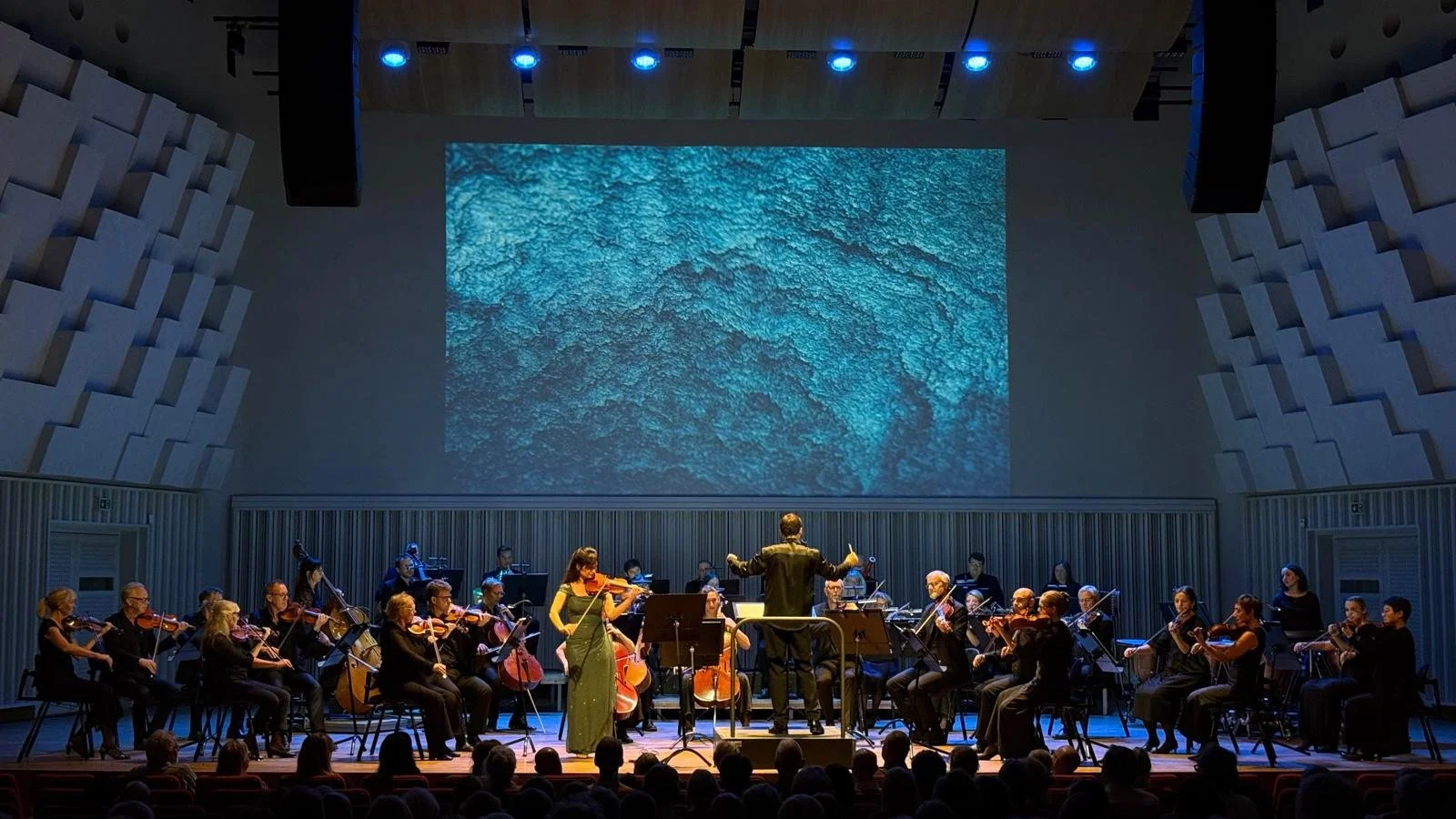Works in Space & Time
The Architecture of Sound and Form
My work exists at the intersection of music, mathematics, and structured motion. Here, sound is sculpted, visuals evolve through time, and space becomes a living entity.
These works are visual architectures of sound—transpositions of musical structures into spatial and temporal dimensions.
Each piece emerges through algorithmic translation: real-time audio input is routed through parametric systems that transmute waveform, rhythm, and spectral density into visual structures. Frequencies are mapped onto coordinates, amplitudes generate deformation, and harmonic relations form the compositional spine of each image or animation.
What results is not a depiction of music, but a field generated by it—an ephemeral architecture arising from within sound’s own logic.
These visualizations are event-based forms: they exist as consequences, not designs. They do not illustrate, but instantiate—the geometry of motion made visible.
PHILOSOPHICAL ADDENDUM
Most hear music in moments.
I perceive it as a spatial unfolding within time.
In my perception, sound is not just a sequence—it is held.
Time is not linear, but spatialized: a container wide enough to let sonic forms cohere into architecture.
Each composition becomes a dwelling, shaped by harmonic relations and temporal breath—
a structure that exists only because the space of time has been opened wide enough for it to arise.
These works are visual echoes of that process:
architectures that emerge because time was held—not rushed, not segmented, but allowed to accumulate, resonate, and transform.
To see structure, one must hold time.
To hear space, one must allow form to arrive.
This is where my perception lives:
in the wide field where temporal attention becomes spatial intelligence.
Technical Addendum
Behind each work lies a system of relations:
Fourier analysis decomposes sound into frequency bands.
These are translated into spatial transformations using parametric functions and dynamic SOP operators.
Time-series modulation governs motion, recursion, and deformation.
Some works implement feedback systems or noise-driven oscillation to amplify microvariations in breath or timbre.
In this framework, composition becomes code + intuition:
a hybrid system where precision meets emergence, and visual form is shaped by resonance rather than image-making.
This approach extends the notion of score—not as symbolic notation, but as a living function:
V(x,t)=f(ω,A,φ,r,δ)
Where
ω = frequency
A = amplitude
φ = phase
r = recursion coefficient
δ = delay / transformation parameter
Such formulations allow sound to sculpt visual space in real time, making rhythm perceptible as architecture, and silence as void.
What follows are audio-visual translations of this process—parametric architectures shaped by breath, rhythm, and harmonic logic.
Olfactospheres: Black Pepper
A Bag of Marbles: Marble VII
Anriako: Breath of Fire

World Premiere of Violin Concerto No. 1, performed by the Ava Bahari and the Swedish Chamber Orchestra, conducted by Nicolas Ellis at Örebro Konserthus (Örebro, Sweden), with complementary visuals and an olfactory installation.